Showing Spotlights 105 - 112 of 627 in category All (newest first):
 One of the issues with microfluidic devices in life sciences is that most platforms rely on materials or chemicals that are outside the biological breadth as building blocks, scaffolds, or coatings for the devices. In a game-changing approach, researchers are developing a transformative way to fabricate microfluidic devices, where solid walls are replaced by transparent, morphing fluid walls using only biocompatible materials. This novel method can generate cell-friendly microfluidic devices on demand with features below 50 microns in size.
One of the issues with microfluidic devices in life sciences is that most platforms rely on materials or chemicals that are outside the biological breadth as building blocks, scaffolds, or coatings for the devices. In a game-changing approach, researchers are developing a transformative way to fabricate microfluidic devices, where solid walls are replaced by transparent, morphing fluid walls using only biocompatible materials. This novel method can generate cell-friendly microfluidic devices on demand with features below 50 microns in size.
Nov 19th, 2020
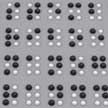 In order to make dynamic written content, for instance a news reader, available for blind or vision-impaired people, scientists have come up with various designs of sheet-type, refreshable Braille displays. Expanding the use of nanotechnologies in designing next-generation Braille readers, researchers now have successfully demonstrated a refreshable Braille display system by using a safe high-voltage power source - a triboelectric nanogenerator.
In order to make dynamic written content, for instance a news reader, available for blind or vision-impaired people, scientists have come up with various designs of sheet-type, refreshable Braille displays. Expanding the use of nanotechnologies in designing next-generation Braille readers, researchers now have successfully demonstrated a refreshable Braille display system by using a safe high-voltage power source - a triboelectric nanogenerator.
Nov 5th, 2020
 Researchers demonstrate that dust-sized photovoltaic cells grown on silicon substrate can be heterogeneously integrated with other chiplets using a high-throughput wafer-level packaging process. The ability to integrate various nanoelectronic chiplets - such as processor, memory, and photovoltaics - in an industrial-scale wafer-level-packaging process, unlocks the potential of large-scale manufacturing of these compact integrated systems with high performance and ultralow cost.
Researchers demonstrate that dust-sized photovoltaic cells grown on silicon substrate can be heterogeneously integrated with other chiplets using a high-throughput wafer-level packaging process. The ability to integrate various nanoelectronic chiplets - such as processor, memory, and photovoltaics - in an industrial-scale wafer-level-packaging process, unlocks the potential of large-scale manufacturing of these compact integrated systems with high performance and ultralow cost.
Oct 27th, 2020
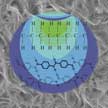 Being able to replicate the extraordinary mechanical properties of nacre and other biological structures could lead to synthetic materials that possess the exceptional mechanical properties required to perform under extreme conditions. In this context, ultrahigh molecular weight polyethylene is a high-performance specialty polymer with a unique set of properties and applications. It shows remarkable strength-to-weight ratio and an excellent energy absorption ability, making it a promising material for protective applications such as body armor, biomedical implants or heat-resistant coatings.
Being able to replicate the extraordinary mechanical properties of nacre and other biological structures could lead to synthetic materials that possess the exceptional mechanical properties required to perform under extreme conditions. In this context, ultrahigh molecular weight polyethylene is a high-performance specialty polymer with a unique set of properties and applications. It shows remarkable strength-to-weight ratio and an excellent energy absorption ability, making it a promising material for protective applications such as body armor, biomedical implants or heat-resistant coatings.
Oct 22nd, 2020
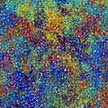 Researchers have recently demonstrated that high-intensity focused ultrasound (HIFU) is a promising, non-invasive stimulus with multiple superior and unique capabilities to induce localized heating and achieve temporal and spatial thermal effects in polymers. The team proposes a new manner of stimulating stimuli-responsive polymers. These polymers demonstrate promise for controlled drug delivery, sensing and biosensing, smart coatings, soft robotics, and flexible electronics among others.
Researchers have recently demonstrated that high-intensity focused ultrasound (HIFU) is a promising, non-invasive stimulus with multiple superior and unique capabilities to induce localized heating and achieve temporal and spatial thermal effects in polymers. The team proposes a new manner of stimulating stimuli-responsive polymers. These polymers demonstrate promise for controlled drug delivery, sensing and biosensing, smart coatings, soft robotics, and flexible electronics among others.
Oct 20th, 2020
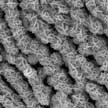 Researchers have successfully produced durable antiviral surfaces that inactivate SARS-CoV-2 within 6 hours. In contrast, on various non-nanostructured surfaces or smooth surfaces, the SARS-COV-2 virus remained viable for up to 48 hours. These results provide evidence that surfaces that are structured with specific nanoscale surface features are effective in preventing SARS-CoV-2 and the subsequent environmental spread. Such nanostructured surfaces can be used in hospital environments and can be extended to other industrial sectors and public infrastructure such as transportation, where fomites or contaminated surfaces are carriers for viral infections.
Researchers have successfully produced durable antiviral surfaces that inactivate SARS-CoV-2 within 6 hours. In contrast, on various non-nanostructured surfaces or smooth surfaces, the SARS-COV-2 virus remained viable for up to 48 hours. These results provide evidence that surfaces that are structured with specific nanoscale surface features are effective in preventing SARS-CoV-2 and the subsequent environmental spread. Such nanostructured surfaces can be used in hospital environments and can be extended to other industrial sectors and public infrastructure such as transportation, where fomites or contaminated surfaces are carriers for viral infections.
Sep 18th, 2020
 Sintering is a critical processing technology in the production of ceramic materials that uses high heat to compact ceramic powders into a solid form. Sintering of pure oxide ceramics requires relatively long processing times (about 20 hours) and high temperatures of 800 degrees Celsius or more. Researchers have now developed an ultrafast high-temperature sintering technique to fabricate solid state electrolytes for solid state batteries with dense structure and excellent electrochemical performance.
Sintering is a critical processing technology in the production of ceramic materials that uses high heat to compact ceramic powders into a solid form. Sintering of pure oxide ceramics requires relatively long processing times (about 20 hours) and high temperatures of 800 degrees Celsius or more. Researchers have now developed an ultrafast high-temperature sintering technique to fabricate solid state electrolytes for solid state batteries with dense structure and excellent electrochemical performance.
May 4th, 2020
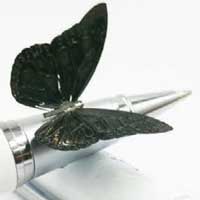 Inspired by living organisms, researchers have developed a somatosensory light-driven robot (SLiR) that can simultaneously sense strain and temperature. The SLiR subsumes pyro/piezoelectric responses and piezoresistive strain sensation under a photoactuator transducer, enabling simultaneous yet non-interfering perception of its body temperature and actuation deformation states. This design confers soft robots with complex perceptions of their body status, as well as the surrounding environments.
Inspired by living organisms, researchers have developed a somatosensory light-driven robot (SLiR) that can simultaneously sense strain and temperature. The SLiR subsumes pyro/piezoelectric responses and piezoresistive strain sensation under a photoactuator transducer, enabling simultaneous yet non-interfering perception of its body temperature and actuation deformation states. This design confers soft robots with complex perceptions of their body status, as well as the surrounding environments.
Apr 28th, 2020
 One of the issues with microfluidic devices in life sciences is that most platforms rely on materials or chemicals that are outside the biological breadth as building blocks, scaffolds, or coatings for the devices. In a game-changing approach, researchers are developing a transformative way to fabricate microfluidic devices, where solid walls are replaced by transparent, morphing fluid walls using only biocompatible materials. This novel method can generate cell-friendly microfluidic devices on demand with features below 50 microns in size.
One of the issues with microfluidic devices in life sciences is that most platforms rely on materials or chemicals that are outside the biological breadth as building blocks, scaffolds, or coatings for the devices. In a game-changing approach, researchers are developing a transformative way to fabricate microfluidic devices, where solid walls are replaced by transparent, morphing fluid walls using only biocompatible materials. This novel method can generate cell-friendly microfluidic devices on demand with features below 50 microns in size.
 Subscribe to our Nanotechnology Spotlight feed
Subscribe to our Nanotechnology Spotlight feed





